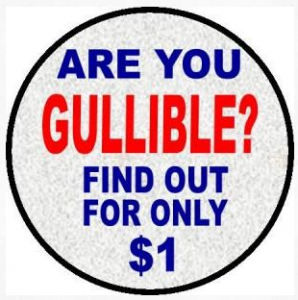 Do you wonder why misinformation and outright lies about known facts often take root in people’s minds? What may come to mind immediately are recent examples: the claim that President Obama wasn’t born in the U.S., and that climate change is a hoax. Some recent research sheds light on what happens cognitively, that may underlie believing falsehoods.
Do you wonder why misinformation and outright lies about known facts often take root in people’s minds? What may come to mind immediately are recent examples: the claim that President Obama wasn’t born in the U.S., and that climate change is a hoax. Some recent research sheds light on what happens cognitively, that may underlie believing falsehoods.
Researchers led by Stephan Lewandowsky of the University of Western Australia, reported in the journal Psychological Science, found that “Weighing the plausibility and the source of a message is cognitively more difficult than simply accepting that the message is true — it requires additional motivational and cognitive resources,” according to a summary of the research reported in Science Today. Moreover, If the topic isn’t very important to you or you have other things on your mind, misinformation is more likely to take hold.
For the research findings, as summarized in Science,
The main reason that misinformation is sticky, according to the researchers, is that rejecting information actually requires cognitive effort. Weighing the plausibility and the source of a message is cognitively more difficult than simply accepting that the message is true — it requires additional motivational and cognitive resources. If the topic isn’t very important to you or you have other things on your mind, misinformation is more likely to take hold.
And when we do take the time to thoughtfully evaluate incoming information, there are only a few features that we are likely to pay attention to: Does the information fit with other things I believe in? Does it make a coherent story with what I already know? Does it come from a credible source? Do others believe it?
Misinformation is especially sticky when it conforms to our preexisting political, religious, or social point of view. Because of this, ideology and personal worldviews can be especially difficult obstacles to overcome.
Even worse, efforts to retract misinformation often backfire, paradoxically amplifying the effect of the erroneous belief. “This persistence of misinformation has fairly alarming implications in a democracy because people may base decisions on information that, at some level, they know to be false,” says Lewandowsky. “At an individual level, misinformation about health issues — for example, unwarranted fears regarding vaccinations or unwarranted trust in alternative medicine — can do a lot of damage. At a societal level, persistent misinformation about political issues (e.g., Obama’s health care reform) can create considerable harm. On a global scale, misinformation about climate change is currently delaying mitigative action.”
Though misinformation may be difficult to correct, all is not lost. According to Lewandowsky, “psychological science has the potential to counteract all those harms by educating people and communicators about the power of misinformation and how to meet it.”
In their report, Lewandowsky and colleagues offer some strategies for setting the record straight.
- Provide people with a narrative that replaces the gap left by false information
- Focus on the facts you want to highlight, rather than the myths
- Make sure that the information you want people to take away is simple and brief
- Consider your audience and the beliefs they are likely to hold
- Strengthen your message through repetition
